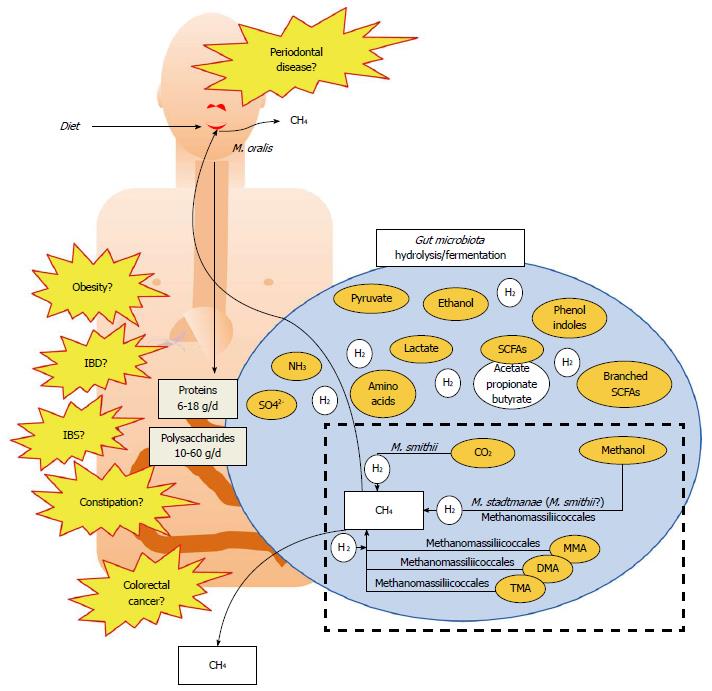Copyright
©2014 Baishideng Publishing Group Inc.
World J Gastroenterol. Nov 21, 2014; 20(43): 16062-16078
Published online Nov 21, 2014. doi: 10.3748/wjg.v20.i43.16062
Published online Nov 21, 2014. doi: 10.3748/wjg.v20.i43.16062
Figure 2 Simplified representation of the role of methanogens in the gut microbiota metabolism and possible association with diseases.
Diet leads to proteins and polysaccharides that enter the gut where they are metabolized by the hydrolytic and fermentative bacteria present in the gut (large blue circle). This produces various compounds (some important being indicated in orange circles), and large amounts of H2, which in turn inhibit the fermentation processes. H2 partial pressure is lowered by hydrogenotrophs, three different types being present in the gut (sulfate-reducing bacteria, acetogens and methanogens). Here, only the methanogens are shown, which are either able to use CO2, methanol, or methyl-compounds [monomethylamine (MMA); dimethylamine (DMA) and trimethylamine (TMA)] reduced by hydrogen to form methane, found in breath and flatulence. A highlight on the TMA use is given in Figure 3. The presence of methanogens in the mouth is also indicated. Altogether, the presence of methanogens has been linked to several diseases (in yellow) but these remains to be clarified (see Table 2 for further explanations).
- Citation: Gaci N, Borrel G, Tottey W, O’Toole PW, Brugère JF. Archaea and the human gut: New beginning of an old story. World J Gastroenterol 2014; 20(43): 16062-16078
- URL: https://www.wjgnet.com/1007-9327/full/v20/i43/16062.htm
- DOI: https://dx.doi.org/10.3748/wjg.v20.i43.16062









